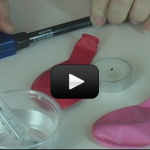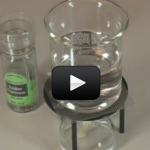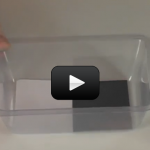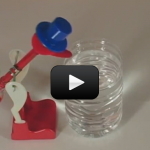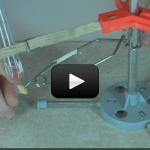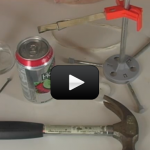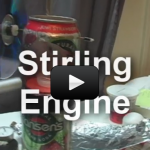Believe it or not, the concept of heat is really a bit tricky. What we call heat in common language, is really not what heat is as far as physics goes. Heat, in a way, doesn’t exist. Nothing has heat. Things can have a temperature. They can have a thermal energy but they can’t have heat. Heat is really the transfer of thermal energy. Or, in other words, the movement of thermal energy from one object to another. Confused yet? Let's get started with this video:
In this lesson, we are going to learn what heat is and how it moves from place to place. You know how they say, “If you can’t stand the heat, get out of the kitchen.”? Well after this lesson you’ll know exactly what it is that you can’t stand!
Believe it or not, the concept of heat is really a bit tricky. What we call heat in common language, is really not what heat is as far as physics goes. Heat, in a way, doesn’t exist. Nothing has heat. Things can have a temperature. They can have a thermal energy but they can’t have heat. Heat is really the transfer of thermal energy. Or, in other words, the movement of thermal energy from one object to another.
Believe it or not, the concept of heat is really a bit tricky. What we call heat in common language, is really not what heat is as far as physics goes. Heat, in a way, doesn’t exist. Nothing has heat. Things can have a temperature. They can have a thermal energy but they can’t have heat. Heat is really the transfer of thermal energy. Or, in other words, the movement of thermal energy from one object to another.
Scientific Concepts:
- Heat is the movement of thermal energy from one object to another.
- Heat can only flow from an object of a higher temperature to an object of a lower temperature.
- Heat can be transferred from one object to another through conduction, convection and radiation.
- Conduction is the wiggle and bump method of heat transfer. Faster moving molecules bump into slower moving molecules speeding them up. Those molecules then bump into other molecules speeding them up and so on increasing the temperature of the object.
- Convection is heat being transferred by currents of moving gas or liquid caused by hot air/liquid rising and cold air/liquid falling.
- Radiation is the transfer of heat by electromagnetic radiation, specifically infra-red radiation.
- Heat is movement of thermal energy from one object to another.
- When an object absorbs heat it does not necessarily change temperature.
- As objects change state they do not change temperature.
- The heat that goes into something as it’s changing phases is used to change the “bonds” between molecules.
- Objects release heat as they freeze and condense.
- Objects absorb heat as they evaporate and melt.
- Freezing points, melting points, boiling points and condensation points are the “speed limits” of the phases. Once the molecules reach that speed they must change state.
- Heat capacity is how much heat an object can absorb before its temperature increases.
- Specific heat is how much heat energy a mass of a material must absorb before it increases 1°C.
- Heat capacity is influenced by the specific heat of the material and/or the amount of the material.
- Each material has its own specific heat. The higher a material’s specific heat is, the more heat it must absorb before its temperature increases.
- A larger amount of something will have a higher heat capacity then a smaller amount of something.
- Water has a very high heat capacity.

